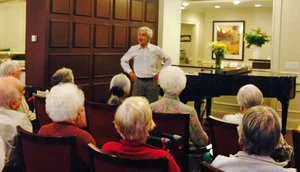YOUTUBE LIVE
Bradley Christensen, baritone
Rachel Fuller, piano
Aria Umezawa, director
Cristina Garcia Martin, animation
In 1861, after giving several recitals in Hamburg with the famed baritone, Julius Stockhausen, Johannes Brahms became inspired to write Die schöne Magelone, or Romanzen aus Ludwig Tieck’s Magelone (op.33). A collection of fifteen songs, the texts are excerpts from Ludwig Tieck’s romantic tale Wundersame Liebesgeschicte der schönen Magelone und des Grafen Peter aus der Provence (The Wondrous Love Story of the Fair Magelone and Count Peter of Provence). First published in 1797, Tieck republished the tale in 1812, with a shortened narrative, and a romantic verse inserted into each of the 18 chapters. Of these verses, Brahms selected 15 to set to music, omitting romances number one, sixteen and seventeen. Brahms completed the romances in 1869, and dedicated the cycle to Stockhausen.
The tale tells of a young travelling knight (Count Peter) who falls in love with the daughter of a King (Princess Magelone). Although she is already betrothed she chooses to elope with him. An unfortunate and curious accident separates them; ultimately, sailors take Peter to a Sultan, where he lives in the palace for several years, and meets the Sultan’s daughter Sulima. They fall in love and plan to elope. Meanwhile, Magelone becomes a shepherdess. However, in a moment of clarity, Peter musters up the courage to escape by himself and is eventually reunited with his beloved Magelone. They marry and live happily ever after.
It has been suggested that the lack of [initial] success of Brahms’ Romanzen was due to the fact that people weren’t familiar with Tieck’s work, and that because the texts are lyrical interludes extracted from separate chapters, there is no clear narrative. As a result, differing performance practices have been adopted, most of which includes a summary of the plot in the programme notes. The more common practice, which seems to have become a performance tradition, is to employ a narrator. The narration for this performance is a translation of Tieck’s 1812 edition, edited and adapted by Aria Umezawa and Bradley Christensen, and is narrated by the singer.
When developing the narration, Aria and I explored how we could present this song cycle to a modern audience, and identified that we have a wonderful opportunity to give this work a staged and cinematic treatment. In discussing the role of the narrator, we decided that for this iteration, the narrator is a well-travelled minstrel who has gained experience and perspective, and touching on issues others have thought about, he presents this tale of love, unity, and knowledge to an interested audience. In a lovely sense of symmetry, it became clear that the minstrel is in fact the travelling knight, Count Peter, recounting his own story.
With an expansive score and operatic in style, this is a tour-de-force for both the singer and the pianist. This performance includes Rachel Fuller on piano, and has been staged by Aria Umezawa, with animation by Cristina Garcia Martin. Running time is 85 minutes, with a five minute intermission.


















